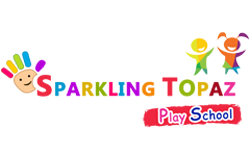Enrolling your child in a playschool is a significant milestone in their early education journey. A playschool provides a nurturing environment where children not only learn their ABCs but also begin to explore the fascinating world of numbers. In this blog post, we’ll take you on a journey through a typical day in the life of a playschool student, highlighting the activities that contribute to their cognitive and social development.
Morning Greetings and Warm-up Activities
The day at a playschool typically starts with cheerful greetings and warm-up activities. Teachers create a welcoming atmosphere, ensuring that each child feels secure and excited to start the day. Morning circle time often includes songs, interactive games, and simple exercises to get the little ones moving and engaged.
ABC Exploration: Learning through Play
Playschools understand the importance of making learning fun, especially when it comes to the fundamentals of language. ABC exploration is a central theme throughout the day. Playful activities like alphabet blocks, letter recognition games, and interactive storytelling sessions captivate the young minds, laying the foundation for language development.
Teachers use a variety of creative approaches to teach the alphabet, such as incorporating arts and crafts projects where children can create their own ABC books. This hands-on experience not only enhances letter recognition but also stimulates creativity and fine motor skills.
Snack Time and Social Interaction
Mid-morning, playschool students gather for a snack, promoting social interaction and fostering a sense of community. Sharing snacks encourages communication and cooperation among the children. Teachers use this time to reinforce good manners and basic social skills, setting the stage for positive peer relationships.
Math Adventures: Introducing Numbers through Play
As the day progresses, playschoolers embark on math adventures that introduce them to the world of numbers. Through games and activities, children learn to count, recognize numerals, and understand basic mathematical concepts. Counting games with colorful objects, number songs, and interactive puzzles make the learning experience enjoyable and memorable.
Playschool teachers skillfully integrate math into everyday activities, from organizing play areas with numbered bins to incorporating counting into storytime. This immersive approach ensures that children not only grasp numerical concepts but also understand their real-world applications.
Outdoor Play: Developing Gross Motor Skills
Physical activity is an essential part of a playschool curriculum. Outdoor playtime allows children to develop gross motor skills, enhance coordination, and enjoy the benefits of fresh air and sunlight. Playgrounds equipped with age-appropriate structures provide a safe space for climbing, running, and imaginative play. Outdoor activities contribute not only to physical development but also promote teamwork and socialization.
Creative Expression: Art and Craft Time
Afternoon sessions often include creative expression through art and craft activities. Playschool students eagerly dive into projects that involve painting, drawing, and crafting with various materials. These activities not only nurture artistic skills but also support cognitive development and self-expression. Teachers guide the children through themed projects, fostering creativity and a love for the arts.
Lunchtime and Independence Building
Lunchtime at playschool is more than just a meal; it’s an opportunity for children to practice independence. Teachers encourage self-help skills, such as opening lunch boxes, using utensils, and cleaning up after themselves. This fosters a sense of responsibility and autonomy, preparing playschoolers for the transition to more formal educational settings.
Nap Time: Recharging for Afternoon Activities
A brief nap or rest time is incorporated into the playschool schedule, allowing children to recharge for the afternoon activities. This period recognizes the importance of adequate rest in supporting overall well-being and attentiveness during learning sessions.
Storytelling and Literacy Development
In the afternoon, playschool students engage in storytelling sessions that enhance literacy skills. Teachers use a variety of age-appropriate books to captivate young imaginations and introduce different genres. Storytelling not only promotes language development but also sparks curiosity and a love for reading.
Closing Circle: Reflection and Goodbyes
The day concludes with a closing circle, providing an opportunity for reflection and closure. Teachers may discuss the day’s activities, celebrate achievements, and reinforce positive behaviors. This ritual helps playschoolers understand the structure of their day and promotes a sense of routine and security.
Parent Involvement and Communication
Playschools recognize the importance of maintaining strong communication with parents. Many institutes organize regular meetings, workshops, and events that involve parents in their child’s educational journey. This collaboration ensures a holistic approach to a child’s development, with educators and parents working together as a team.
In conclusion, a day in the life of a playschool student is filled with purposeful activities designed to nurture cognitive, social, and emotional development. From ABC to 123, playschools play a crucial role in laying the foundation for a lifelong love of learning.



